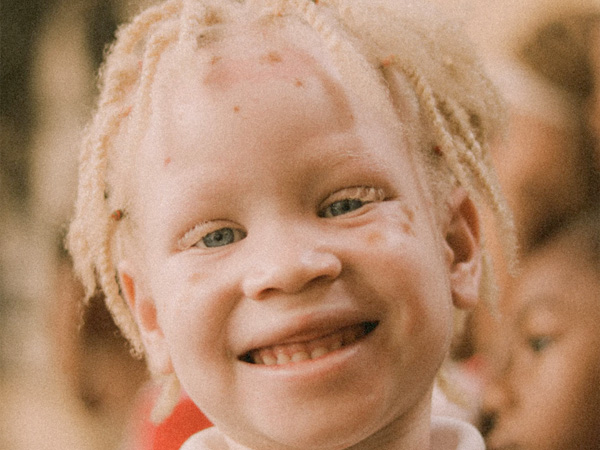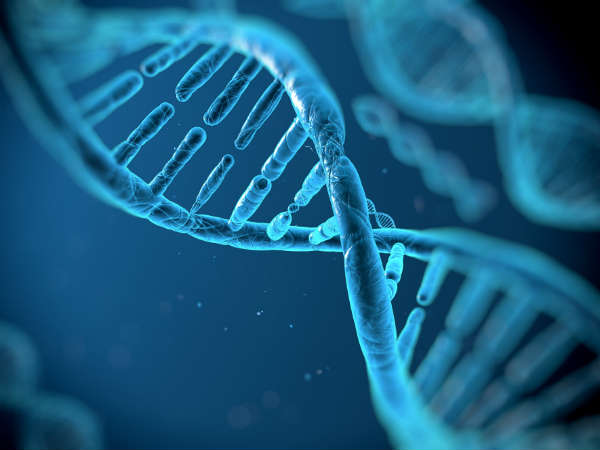Disorders Cure
oi-Shivangi Karn
on June 12, 2021
June 13 is celebrated as International Albinism Awareness Day. Albinism is a rare, non-contagious and genetic disease characterised by a lack of pigmentation in body parts like hair, eyes and skin.
The condition is misunderstood socially and medically and people with albinism often face discrimination worldwide. Therefore, the day is meant to educate people about the rights of people with albinism, highlight their achievements and celebrate them and show that these people can defy all odds.
In this article, we will discuss albinism and its causes, symptoms, risk factors and treatments. Take a look.
India Reports First Case of Herpes Simplex Virus In COVID-19 Patient: All About Herpes Explained

What is Albinism?
Albinism is a group of heritable diseases associated with absent or decreased melanin in ectoderm-derived tissues such as skin, hair, nails, hooves, eyes, causing a decrease in skin pigmentation.
Melanin is a natural skin pigment that plays a great role in determining the colour of the skin, and hair and in the development of certain optical nerves. When the body lacks melanin in albinism, problems related to the development and functions of the eyes arise, including the loss of pigmentation of the skin and hair, making a person highly susceptible to the ultraviolet rays and at increased risk of actinic damage and skin cancer.
The prevalence of albinism is estimated at 1:17000 to 1:20000 overall. There are multiple types of albinism and each is prevalent in different regions of the world. In Sub-Saharan Africa and America, the condition is highly prevalent.
Yoghurt For Diabetes: Is It A Healthy Option?
Types Of Albinism
There are two prominent types of albinism. The most common form of albinism is oculocutaneous albinism (OCA). It mainly affects the skin and the eyes. To date, there are seven types of OCA identified (OCA1 to OCA7). Another prominent type of albinism includes ocular albinism (OA), followed by Hermansky-Pudlak syndrome (HPS) and Chediak-Higashi syndrome (CHS)[1].
| Types | Definition |
| OCA1 | It is a defect in the TYR gene product tyrosinase. Loss of this gene causes an inability to synthesize melanin.
It is prevalent in America and China. |
| OCA2 | It is a defect in the OCA2 gene product, causing reduced production of P protein.
It is prevalent in African Americans. |
| OCA3 | It is a defect in the TYRP1 gene product that affects melanosomes that helps in the production and storage of melanin. It is prevalent in Southern Africa. |
| OCA4 | It is a defect in the SLC45A2 gene product, which is responsible for normal pigmentation of the skin.
It is prevalent in Japan. |
| OCA5 | The defective gene is not yet identified.
It is very rare and noted in a few Pakistani families. |
| OCA6 | It is a defect in the SLC24A5 gene which is also responsible for the natural skin colour. It plays a key role in the evolution of light skin. It is very rare and noted in a few Chinese and Indian families. |
| OCA7 | It is a defect in LRMDA that plays a role in melanocyte differentiation.
It is very rare and noted in the consanguineous Faroese family. READ RELATED: NHS Test & Trace chief Dido Harding to head up agency replacing Public Health England |
| Ocular albinism (OA) | It is a defect in the GPR143 gene product that causes vision abnormalities. The condition is prevalent in males. It is prevalent worldwide. |
| Hermansky-Pudlak syndrome (HPS) | It has two characteristics: albinism with visual problems and bleeding problems due to platelets dysfunction.
It is prevalent worldwide, mostly in Puerto Rico. |
| Chediak-Higashi syndrome (CHS) | It is characterised by oculocutaneous albinism with immune deficiency, leading to an increased risk of infection, bruise and bleeding.
It is very less with less than 500 cases in 20 years. |

Causes Of Albinism
According to a study, albinism was one of the first genetic diseases noted in human beings, but it was until recently when the molecular mechanism behind the condition was identified.
Albinism is caused due to mutation in at least seven different genes. These genetic mutations result in a reduction in melanin pigment biosynthesis, causing various clinical features such as hypopigmentation of the skin, eyes and hair and reduced vision. [2] The type of gene mutation determines its types and clinical features.
How Is Albinism Inherited?
As aforementioned, albinism is a genetic disorder related to insufficient or no production of melanin. In OCA (all types) and OA, the albinism gene is passed as an autosomal recessive inheritance pattern, meaning a child with albinism gets two copies of the albinism-causing gene from each parent.
When both the parents have a copy of albinism gene, they are referred to as a carrier and do not usually show symptoms of the condition. However, when two individuals who are carriers have a child, there is a 25 per cent risk of the child getting albinism, 50 per cent becoming an unaffected carrier (like their parents) and 25 percent to not have the condition and not be a carrier. [3]
COVID Nails: Is It A Serious Sign Related To COVID-19?
Symptoms Of Albinism
- White hair and extremely light-coloured skin. [4]
- Hair colour can range from very white to brown to yellow
- Pale eyebrows and eyelashes.
- Eye colour can be light blue or brown.
- The irises may be translucent that can make eyes appear red in some lighting.
- Vision impairment [5]
- Inability of eyes to move in unison.
- Sensitivity to light.
- Blurred vision
- Poor depth perception.
- In some cases, complete blindness

Complications Of Albinism
Some of the complications of albinism include:
- Social and emotional challenges such as bullying, questions about their appearance and teasing. [6]
- Vision problems that can impact employment and learning ability.
- Sunburn [7]
- Increased risk of skin cancer.
- Social isolation
- Stress
- Poor self-esteem
- Eye care: It includes annual eye exams, surgery on optical muscles, prescription eyeglasses or other treatments related to correcting vision. [8]
- Skincare: It includes tips to protect the skin from sunlight such as wearing protective clothes, limiting outdoor activities, wearing sunscreen and annual eye examination to prevent the risk of skin cancer.
- New genetic therapies:Currently, the treatment for albinism aims either surgically or pharmacologically to optimize vision and protect the skin. However, new therapies are on the verge of development that aims to address the molecular errors of albinism. These gene-based strategies can edit the genetic errors in albinism and represent a new era in the management of albinism. [9]
Diagnosis Of Albinism
The foremost way to identify albinism is by physical examination. Other tests include a detailed examination of the eyes and genetic testing. Ocular albinism is diagnosed probably during the first 3-6 months in newborns.
Mixing And Matching Of COVID-19 Vaccine Doses? Is It Safe?
Treatments For Albinism
As albinism is a genetic disorder, it cannot be cured, but some of its symptoms could be managed with appropriate treatment methods like:
What Is Kala-Azar (Black Fever)? Causes, Symptoms, Risk Factors, Treatments And Prevention
To Conclude
People with albinism have the same lifespan as healthy individuals. They have the ability to fulfil their goals and live happy life. The main problem they face is social stigmatisation and severe discrimination, causing them to live in marginalised social conditions. Some studies also mention how people with albinism are the main target for religion and superstition
On this International Albinism Awareness Day, let’s swear to educate people about the condition and address related social stigma and discrimination.
GET THE BEST BOLDSKY STORIES!
Allow Notifications
You have already subscribed
Source:









